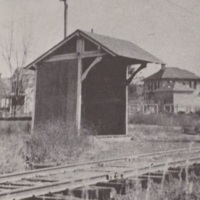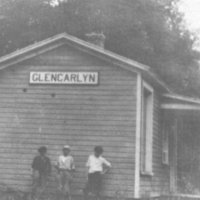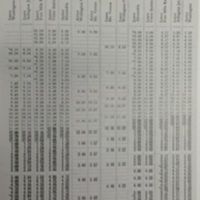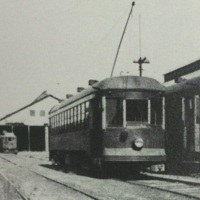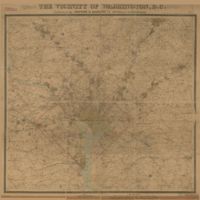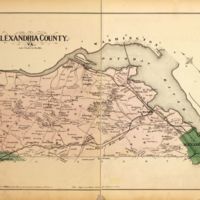Browse Items (16 items total)
The Washington and Old Dominion Railroad (W&OD) was founded in 1900 as the Great Falls and Old Dominion Railroad. The steam-rail line began in Rosslyn and extended out to various Arlington neighborhoods, including Cherrydale (1904) and Great Falls (1906). The W&OD continued to expand beyond the county by connecting to the Great Falls and Bluemont lines at the Bon Air neighborhood junction. Their service to Great Falls was discontinued in the 1930s, when their right-of-way was transferred to become Old Dominion Drive. The Bluemont line was aquired by the Southern Railroad in 1944 and continued service until 1968. Today the former W&OD line is a popular biking path.
Trolley transportation helped to strengthen and expand Arlington's suburban environment at the turn of the century.
The stop featured in this photograph is the Alexandria Junction along present day Route 1.
Trolley transportation helped to strengthen and expand Arlington's suburban environment at the turn of the century.
The stop featured in this photograph is the Alexandria Junction along present day Route 1.
Collection: Neighborhoods
This steam railroad began as the Alexandria, Loudon, and Hampshire Railroad in the 1850s. The line ran from Alexandria City, up the Four Mile Run Valley, past the Glencarlyn neighborhood (whose stop is pictured) and out to Herndon, Leesburg, and Bluemont. In 1911 the line was taken over by the Washington and Old Dominion Railroad (W&OD) and converted to electric-rail the following year. The W&OD was in service until 1968.
The Glencarlyn stop in pictured here. By 1900 trolley lines linked the new and expanding suburban communities of Glencarlym, Clarendon, Ballston, Cherrydale, Bon Air, and Barcroft. The rail became the fastest and most efficient way to travel within the county and beyond.
The Glencarlyn stop in pictured here. By 1900 trolley lines linked the new and expanding suburban communities of Glencarlym, Clarendon, Ballston, Cherrydale, Bon Air, and Barcroft. The rail became the fastest and most efficient way to travel within the county and beyond.
Collection: Neighborhoods
Originally called the Arlington Fairfax Line, this line began in 1896 as a horse-drawn line with stops at Rosslyn, Fort Myer, Clarendon, Ballston, Hall's Hill, and Falls Church. Throughout the early 1900s the line expanded to include service to Arlington National Cemetery, Columbia Pike, Green Valley, Vienna, and Fairfax. Expansion of trolley lines in Arlington at the turn of the century helped to expand and strengthen Arlington's emerging suburban environment. In the 1920s and 1930s Arlington residents began to transition to automobile transportation. After nearly a decade of financial troubles, the line officially stopped running in 1932.
This image shows one of the lines daily schedules.
This image shows one of the lines daily schedules.
The Washington, Alexandria, and Mt. Vernon line was completed in 1894 and was operational until 1932. The route of this line traveled from Washington, D.C. along the Fourteenth Street Bridge, down Route 1 to Alexandria, and out to George Washington's Mount Vernon. This line serviced many neighborhoods, including the African American neighborhoods of East Arlington and Queen City. The line also ran to the Luna Park Amusement Park, which was owned and operated by Washington, Alexandria, and Mt. Vernon executives.
This image shows some of the lines' cars at their storage facility along Four Mile Run.
This image shows some of the lines' cars at their storage facility along Four Mile Run.
Collection: Neighborhoods
This map shows Arlington County as well as the District of Columbia and neighboring Virginia and Maryland counties. In the years after the Civil War, Arlington neighborhoods and trolley lines continued to form and expand. Increasingly these developments moved away from piecemeal, individual home building and toward large, centrally planned community developments.
Collection: Maps
This 1878 map of Arlington County, then called Alexandria County, shows growing neighborhoods and trolley line development following the Civil War as the area transitioned from rural farmland to a more suburban environment.
Collection: Maps
